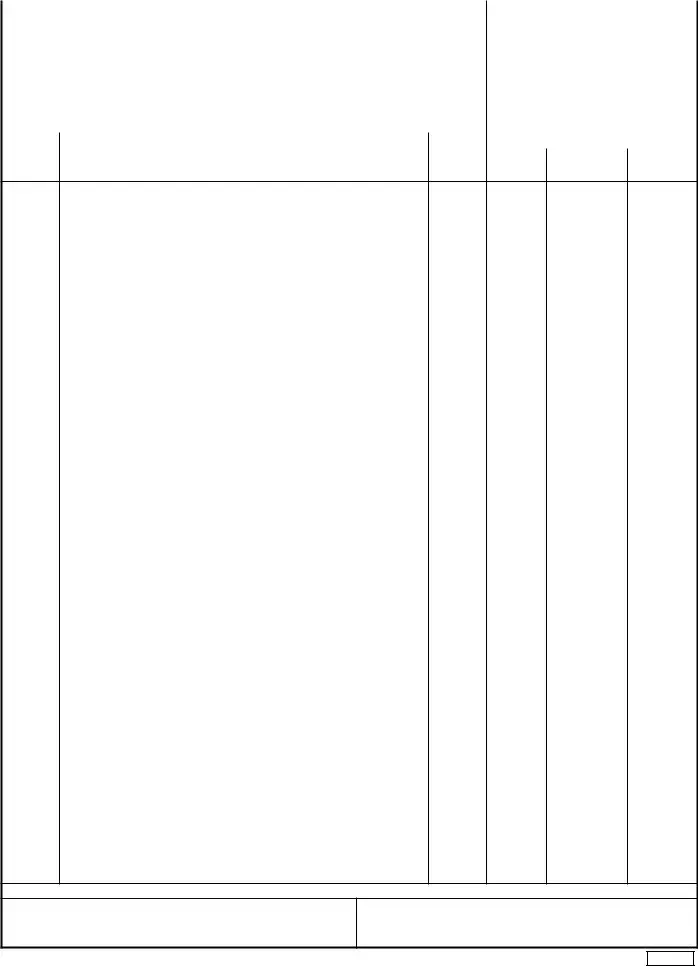The DD Form 2062, also known as the Record of Preparation and Disposition of Remains (Outside CONUS), shares similarities with the DD Form 1750 in terms of itemized documentation and accountability. Both forms require detailed listings, albeit for different purposes. The DD Form 2062 focuses on the meticulous documentation related to the preparation and disposition of remains, ensuring all steps and materials are accounted for, mirroring the detailed packing list and item accountability seen in the DD Form 1750.
Bill of Lading forms, commonly used in shipping and logistical operations, parallel the DD Form 1750. Like the packing list, Bills of Lading detail the contents being shipped, the quantity, and the destination. While Bills of Lading serve a broader commercial use, including terms of carriage and receipt of goods, both documents ensure the contents of a shipment are transparent and traceable, facilitating the movement of goods from one point to another.
The DA Form 3161, known as the Request for Issue or Turn-in, shares commonalities with the DD Form 1750 in terms of managing inventory and itemizing equipment supplies. Both forms are instrumental in the logistical operations of the military by keeping accurate records of items issued or returned. The DA Form 3161 is versatile for both temporary and permanent issue transactions, mirroring DD Form 1750's use in tracking equipment packed for transport.
Inventory List Sheets, while not a specific form, serve a purpose akin to the DD Form 1750. Both document items in storage or shipment, listing quantities, descriptions, and relevant details. Inventory Lists are used across various sectors for internal tracking of assets, paralleling the specificity and organizational utility of the DD Form 1750 for military packing lists.
Purchase Orders, central to procurement and supply chain systems, mirror aspects of the DD Form 1750. They specify goods or services bought, quantities, and prices, resembling the listing and accountability of items on the DD Form 1750. Both documents facilitate transactions, though Purchase Orders primarily initiate the acquisition process, whereas DD Form 1750 tracks the fulfillment and shipment of items.
The Equipment Custody Receipt, a document used to assign responsibility for equipment within organizations, shares similar documentation functions with the DD Form 1750. It lists items entrusted to an individual’s care, mirroring the detailed itemization and accountability seen in the packing list. Both forms play crucial roles in asset management and accountability within their respective frameworks.
Material Safety Data Sheets (MSDS), required for hazardous materials handling, share the principle of detailed itemization with the DD Form 1750, albeit for safety and handling instructions. Both documents provide essential information – the DD Form 1750 lists equipment details for logistical purposes, while MSDS offer critical data on material hazards, handling, and emergency measures, prioritizing safety in operations.
The Property Book Unit Supply Enhanced (PBUSE) system documents, vital for the Army's automated inventory, asset, and transaction management, parallel the DD Form 1750’s goal of accurate item tracking. PBUSE maintains records of all property issued to soldiers and units, similar to how the DD Form 1750 tracks the contents of shipments, ensuring accountability and readiness.
Shipping Manifests, utilized in the transportation industry, bear resemblance to the DD Form 1750. They list all goods being transported, including descriptions and quantities, much like the detailed contents list of the packing list. Shipping manifests ensure all items are accounted for during transport, echoing the DD Form 1750's role in military logistics.
The Aircraft Load Plan, used for planning the loading of cargo and personnel onto aircraft, aligns with the DD Form 1750's organizational function. Both documents require precise itemization and consideration of space and weight constraints. The Aircraft Load Plan ensures safe and efficient loading aligned with flight parameters, analogous to how the DD Form 1750 facilitates the organized packing and shipment of military equipment.


